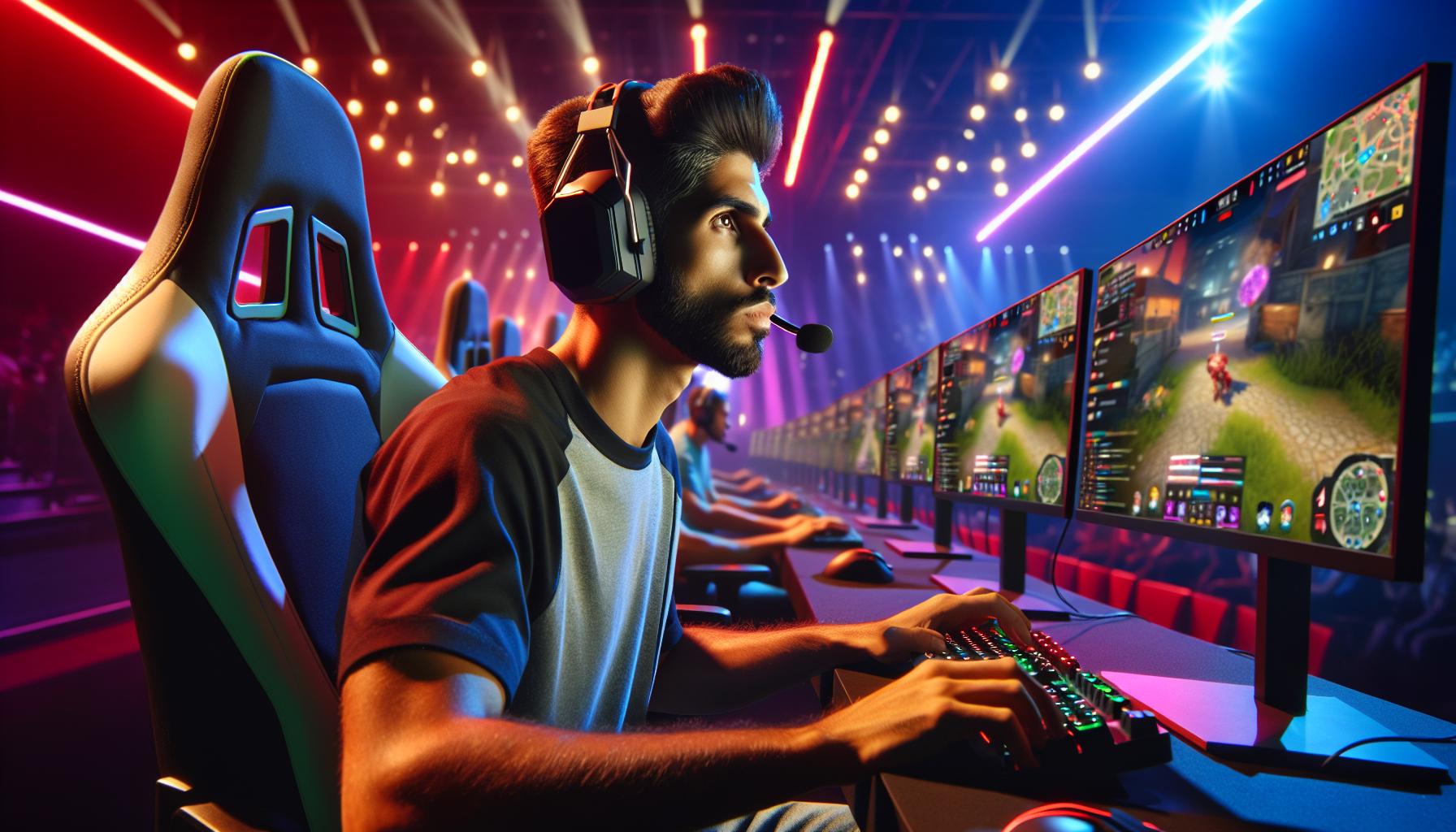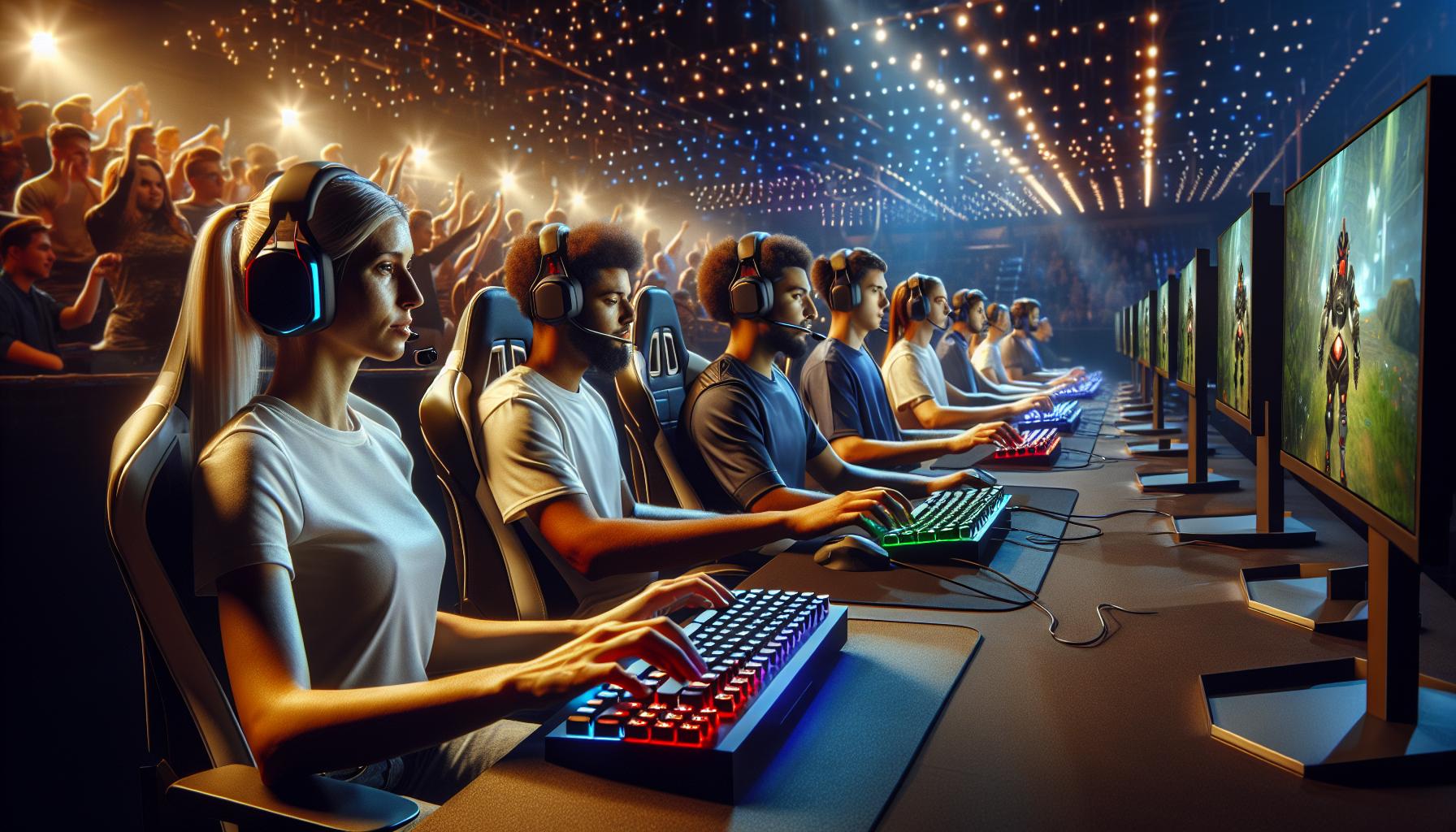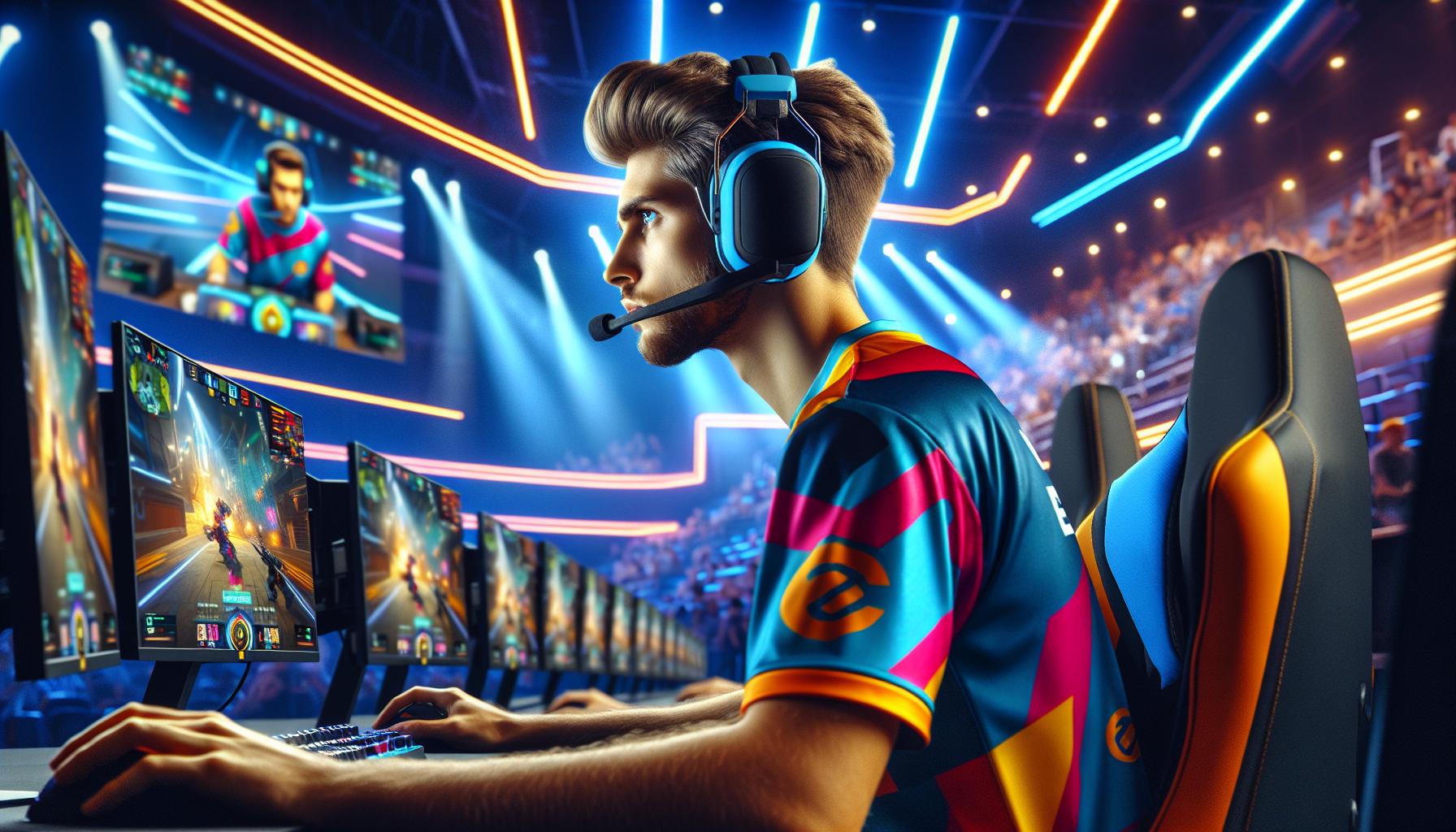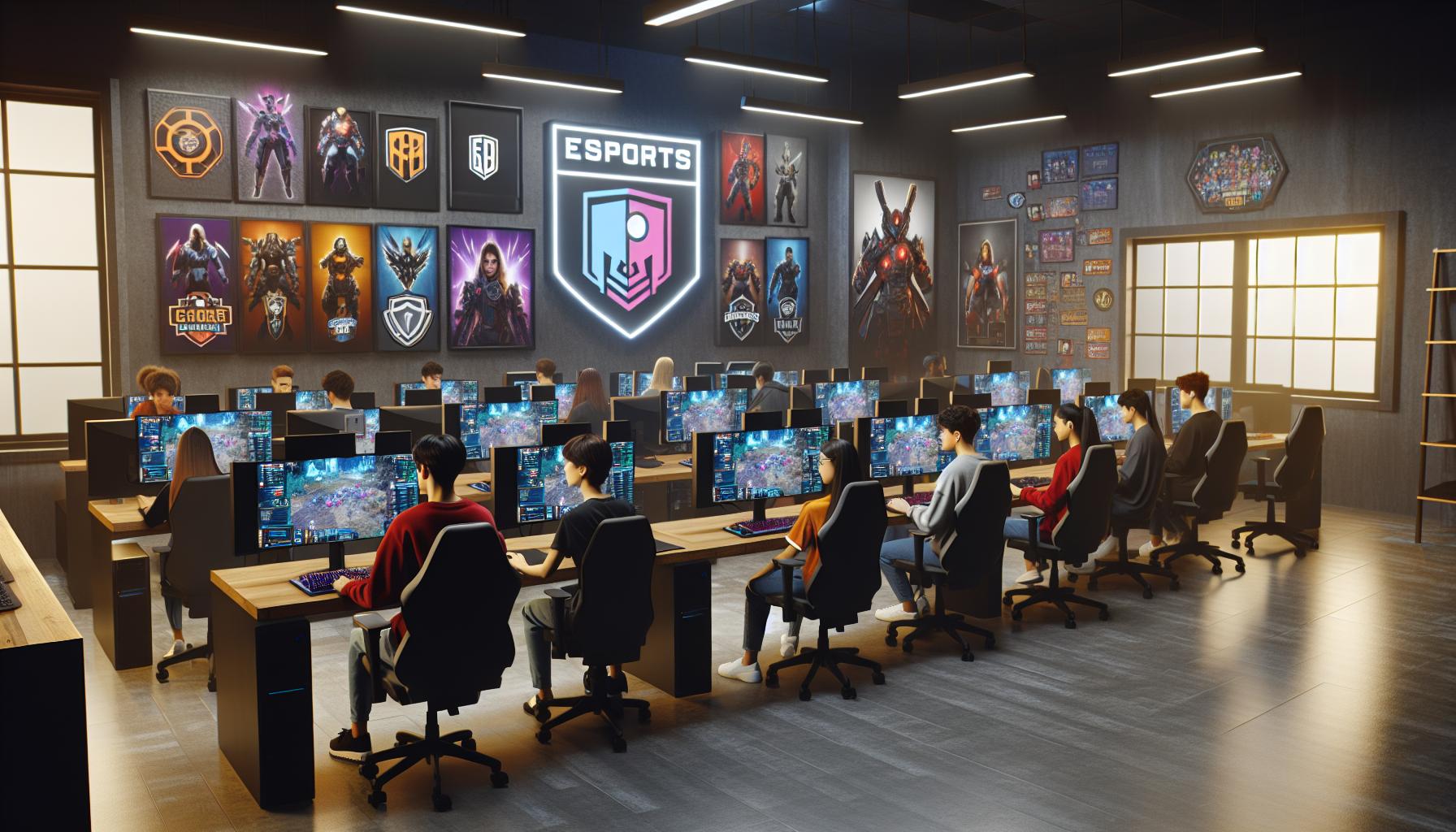The Best Fluffy Pancakes recipe you will fall in love with. Full of tips and tricks to help you make the best pancakes.

Are Esports Real Sports? The Science and Evidence Behind Pro Gaming’s Legitimacy
I’ve spent years following both traditional sports and esports, and the debate over whether competitive gaming qualifies as a “real sport” continues to spark heated discussions. As someone who’s witnessed the explosive growth of esports firsthand, I understand why many people question its legitimacy in the sports world.
When I look at today’s esports scene, I see professional players training for hours, teams competing in packed arenas, and millions of viewers tuning in to watch major tournaments. With global revenues exceeding $1 billion and traditional sports organizations like the NBA and NFL investing heavily in esports teams, it’s clear this isn’t just a passing trend. But does that make it a sport? Let’s dive into what defines a sport and how esports measures up against these criteria.
Key Takeaways
- Esports demonstrates legitimate sport characteristics through organized competitions, professional leagues, and structured training regimens comparable to traditional sports
- Physical demands in esports are measurable, with players maintaining 120-180 BPM heart rates and executing 300-400 actions per minute during competitions
- Major sports organizations, including the International Olympic Committee, have officially recognized esports as a legitimate competitive activity
- The esports industry has evolved into a billion-dollar market with established revenue streams from sponsorships, media rights, and merchandise
- Collegiate institutions increasingly support esports through varsity programs, offering $16+ million in scholarships annually and dedicated training facilities
What Makes Something a Sport?
The definition of sport extends beyond mere physical activity. To classify an activity as a sport, it must meet specific criteria established by sports governing bodies and academic institutions.
Physical Activity Requirements
Physical exertion in sports ranges from high-intensity movements to precise motor control. Professional gamers demonstrate measurable physical demands, including:
- Maintaining 300-400 actions per minute on keyboard and mouse
- Sustaining elevated heart rates of 120-180 BPM during competitions
- Executing micro-movements requiring fine motor skills
- Developing hand-eye coordination at professional athlete levels
| Physical Metric | Traditional Sports | Esports |
|---|---|---|
| Heart Rate (BPM) | 160-180 | 120-180 |
| Actions/Minute | 10-60 | 300-400 |
| Cortisol Levels | Elevated | Elevated |
Competition and Skill Elements
Competitive sports require structured frameworks and demonstrable expertise. Essential competitive elements include:
- Organized leagues with standardized rules
- Ranking systems to measure performance
- Skill progression through dedicated practice
- Direct competition between individuals or teams
- Objective scoring methods
- Professional oversight and officiating
| Competition Element | Implementation |
|---|---|
| Governance | Official federations |
| Structure | League formats |
| Training | Systematic practice |
| Assessment | Performance metrics |
| Recognition | Professional status |
The Rise of Professional Esports

Professional esports has transformed from casual gaming competitions into a structured industry with established leagues, substantial prize pools and dedicated training facilities.
Major Tournaments and Prize Pools
The esports tournament landscape features prestigious events with multi-million dollar prize pools. The International Dota 2 Championship distributed $40 million in prizes in 2021, surpassing many traditional sports tournaments. Major events like the League of Legends World Championship attract 100+ million viewers across streaming platforms. The structure mirrors traditional sports with:
- Regional qualifiers determining tournament slots
- Double-elimination brackets ensuring competitive integrity
- Live arena events hosting 15,000+ spectators
- Professional broadcasting teams providing match commentary
- Year-round competitive seasons with ranking systems
- Mechanical drills focusing on reaction time improvement
- Team strategy sessions with coaches and analysts
- VOD review of past performances and opponent tactics
- Physical exercise programs for stamina and focus
- Mental health sessions with sports psychologists
- Dietary plans optimized for sustained concentration
| Training Component | Daily Hours |
|---|---|
| Team Practice | 6-8 |
| Individual Skills | 2-3 |
| Physical Exercise | 1-2 |
| Strategy/Review | 2-3 |
| Mental Training | 1-2 |
Comparing Traditional Sports and Esports

Traditional sports and esports share fundamental elements that define competitive athletics, from structured competition formats to intense training requirements. Let’s examine key aspects that highlight their similarities and differences.
Physical Demands and Athleticism
Professional esports athletes maintain heart rates between 120-180 BPM during competitions, comparable to traditional athletes during matches. Esports competitors execute 300-400 actions per minute (APM) in games like StarCraft II, demonstrating exceptional fine motor control. Here’s how physical demands compare:
| Physical Aspect | Traditional Sports | Esports |
|---|---|---|
| Heart Rate (BPM) | 120-170 | 120-180 |
| Cortisol Levels | Elevated during competition | Elevated during competition |
| Physical Training Hours/Week | 20-30 | 10-15 |
| Eye Movement Actions/Min | 100-120 | 300-400 |
| Risk of Injury | Joint/muscle strain | Repetitive stress injuries |
Team Dynamics and Strategy
Team-based esports mirror traditional sports in their strategic complexity and coordination requirements. Professional teams in games like Counter-Strike: Global Offensive employ dedicated coaches, analysts and support staff. Strategic elements include:
- Specialized roles within teams (Support, Entry Fragger, Shot Caller)
- Pre-match strategy development using data analytics
- Real-time tactical adjustments during competitions
- Coordinated team movements and positioning
- Communication systems for rapid decision-making
- Post-match analysis and performance review sessions
Players study opponent tendencies, develop counter-strategies and execute complex team maneuvers, similar to traditional sports teams preparing for matches.
Recognition by Sports Organizations

Major sports organizations increasingly acknowledge esports as a legitimate competitive activity, with several traditional institutions incorporating esports into their frameworks. The integration spans from international Olympic bodies to collegiate athletics programs.
Olympic Committee Perspectives
The International Olympic Committee (IOC) formally recognized esports as a sport in 2017, marking a significant milestone in competitive gaming. The IOC partnered with Intel to host the Olympic Virtual Series in 2021, featuring five virtual sports competitions. Several Olympic councils in Asia have integrated esports into major sporting events:
- Asian Games included esports as a demonstration sport in 2018
- Southeast Asian Games featured six medal events in esports in 2019
- Olympic Council of Asia added esports to the 2022 Asian Games medal program
College Athletics Programs
U.S. collegiate institutions embrace esports through official varsity programs, scholarships, dedicated facilities. The National Association of Collegiate Esports (NACE) oversees competitive collegiate gaming with:
- 170+ member schools offering varsity esports programs
- $16 million in esports scholarships awarded annually
- Dedicated training facilities at 90% of member institutions
- Structured competitions across multiple game titles
Key developments in collegiate esports include:
- Official NCAA D1 institutions launching varsity esports teams
- Conference-level esports championships emerging across regions
- Professional development programs for esports management
- Integration of esports curricula into academic programs
- Dedicated coaching staff
- Practice schedules
- Performance analytics
- Recruitment processes
- Academic eligibility requirements
The Future of Competitive Gaming
The esports industry displays clear signs of continued expansion through emerging technologies, market growth projections and evolving competition formats. Recent market analysis indicates a projected growth to $5.74 billion by 2027, with a compound annual growth rate of 23.2%.
Technological Advancements
Virtual Reality (VR) and Augmented Reality (AR) technologies create new competitive gaming experiences. Major developers integrate these technologies into existing titles:
- VR esports titles like Beat Saber feature professional leagues with $100,000+ prize pools
- AR integration in mobile esports increases accessibility to competitive gaming
- Cloud gaming platforms reduce hardware barriers for competitive play
Market Evolution
The esports ecosystem continues to mature with diversified revenue streams:
| Revenue Source | Percentage of Total Revenue |
|---|---|
| Sponsorships | 42% |
| Media Rights | 28% |
| Publisher Fees | 15% |
| Merchandise | 10% |
| Tickets | 5% |
New Competition Formats
Traditional sports organizations adapt esports elements into their competitive structures:
- Hybrid events combining physical sports with digital components
- Cross-platform tournaments unifying mobile PC console players
- Regional leagues expanding into international competitions
Educational Integration
Academic institutions expand their esports programs through:
- Dedicated esports facilities in 175+ universities
- Specialized degree programs in esports management game design
- Research initiatives studying competitive gaming performance analytics
- Integration of esports into STEM education programs
- Southeast Asian market growth exceeding 20% annually
- Latin American esports viewership increasing by 15% yearly
- African gaming initiatives establishing regional tournaments infrastructure
- Middle Eastern investments in esports facilities broadcasting rights
Conclusion
The evidence is clear: esports has earned its place alongside traditional sports. From the intense physical demands on players to the structured competitive frameworks and global recognition I’ve analyzed it’s impossible to deny esports’ legitimacy as a sport.
I’ve seen firsthand how the industry has evolved with professional leagues dedicated training facilities and Olympic recognition. The physical and mental demands on esports athletes coupled with the strategic depth and team dynamics mirror what we see in conventional sports.
As someone deeply involved in both traditional sports and esports I’m confident in saying that competitive gaming isn’t just a trend – it’s a legitimate sport that’s here to stay. The future of sports is expanding and esports has rightfully claimed its position in this evolution.
